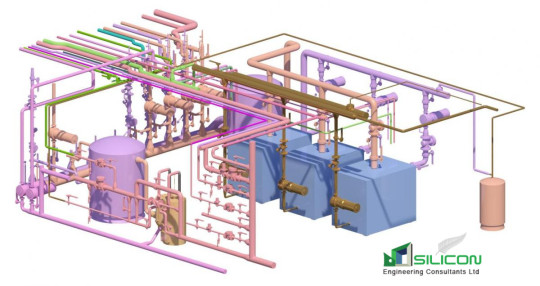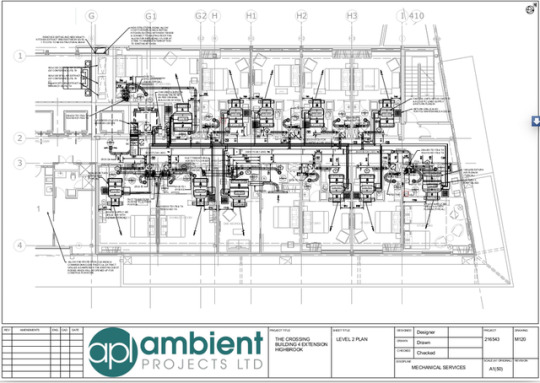#Loadcalculation
Explore tagged Tumblr posts
Text
Electricity Load Calculator in kW for Home: Best Tool
Managing your home's energy requirements efficiently begins with understanding your electricity load. Whether you’re designing a new house, upgrading your electrical systems, or considering a backup power source, an electricity load calculator in kW for home can be an invaluable tool. This guide walks you through everything you need to know about calculating your home’s electricity load, technical considerations, and how to optimize your energy usage.

Table of Contents What Is an Electricity Load Calculator in kW for Home? Why Is Electricity Load Calculation Important? How to Calculate Electricity Load in kW Example of Load Calculation for a Typical Home Tools for Electricity Load Calculation Technical Considerations for Load Calculation How to Reduce Your Home’s Electricity Load FAQs on Electricity Load Calculator in kW for Home Final Thoughts Follow Us on Social:
What Is an Electricity Load Calculator in kW for Home?
An electricity load calculator helps estimate the total power consumption of your household appliances and systems in kilowatts (kW). Kilowatts, a unit of power, reflect the rate at which electricity is consumed. Calculating this accurately ensures your home’s electrical system operates safely and efficiently, and it also helps in selecting the right generator size or solar panel system.
Why Is Electricity Load Calculation Important?
Understanding your electricity load has several benefits: - Safety: Prevent overloading circuits, reducing the risk of electrical fires. - Cost Optimization: Identify high-power appliances to optimize their usage and save on energy bills. - Backup Power Planning: If you’re using a generator, knowing your load ensures you select the right capacity. Using an electricity load calculator in kW for home simplifies this process by providing precise load values, allowing you to take informed decisions.
How to Calculate Electricity Load in kW
Electricity load calculation involves determining the wattage of all devices and systems in your home, converting these values into kilowatts (1 kW = 1000 watts), and summing them up. Follow these steps to calculate your home’s load: 1. List All Electrical Devices and Appliances Make a list of all the electrical devices in your home. This includes: - Kitchen appliances (e.g., refrigerator, microwave, oven) - Heating and cooling systems (e.g., air conditioners, heaters) - Lighting fixtures - Entertainment systems (e.g., TVs, gaming consoles) - Miscellaneous items (e.g., washing machines, chargers, fans) 2. Identify the Wattage of Each Appliance The wattage of most appliances is typically listed on a label or in the user manual. If it’s not available, you can calculate it using the formula: Wattage = Voltage (V) × Current (Amps) For instance, if your microwave runs on 120 volts and uses 10 amps, its wattage is: 120 × 10 = 1200 watts or 1.2 kW 3. Estimate Usage Hours Determine how many hours per day each appliance is used. This will help you estimate the energy consumption in kilowatt-hours (kWh): Read More....#ElectricityCalculator, #LoadCalculator, #HomeEnergy, #EnergyEfficiency, #kWCalculator, #ElectricPower, #HomeLoadCalc, #SaveEnergy, #PowerConsumption, #EnergyTips, #ElectricityUsage, #HomePowerGuide, #EnergyCalculator, #PowerEfficiency, #SustainableHome Read the full article
#Electricity#ElectricityGuide#energyefficiency#EnergyTips#HomeEnergy#kWCalculator#Loadcalculation#PowerCalculation#PowerUsage#sustainableliving
0 notes
Text
Unlocking Solar Energy Potential: Insights for Engineers & Enthusiasts
The transition to renewable energy sources, particularly solar power, has gained significant momentum in recent years. With energy efficiency at the forefront of every project, understanding the technicalities of solar power systems can make a world of difference. In this newsletter, we’ll explore essential topics to help you optimize your solar installations, improve project outcomes, and ensure your designs are both efficient and reliable.
And if you’re looking for tools to make solar project planning easier, check out my Solar Power Load Calculator here; a simple, efficient way to calculate your system’s energy needs.
🌟 How to Optimize Solar Panel Placement for Maximum Efficiency
Solar panel placement is one of the most critical aspects of any solar power project. A few factors to keep in mind include:
Orientation and Tilt Angle: In the northern hemisphere, panels should face south at an angle equal to the site’s latitude for optimal sunlight absorption. In contrast, in the southern hemisphere, they should face north.
Minimizing Shadows: Even partial shading can cause a significant drop in energy output. Use tools like solar pathfinders or drone-based imaging to identify potential shading issues.
Spacing Between Panels: To avoid shading from nearby panels during early morning or late afternoon hours, consider row spacing that accounts for the sun’s position throughout the year.
Mounting Type: Fixed-mount systems are cost-effective, but tracking systems (single-axis or dual-axis) can improve efficiency by following the sun’s movement.
Proper placement can increase energy production by 10–25%, depending on location and seasonal variations.
🔌 The Role of Solar Inverters in Project Design
While solar panels generate direct current (DC), most appliances and grid systems run on alternating current (AC). This is where solar inverters come into play. Here’s why they’re crucial:
DC to AC Conversion: Inverters transform DC electricity from solar panels into usable AC power.
Monitoring and Optimization: Modern inverters include monitoring tools that track energy production and detect performance issues. Some even come with maximum power point tracking (MPPT) technology to optimize panel efficiency.
Safety Features: Advanced inverters include protection mechanisms like arc fault detection, ensuring system safety.
Choosing the Right Inverter: Depending on your project, you might select from string inverters, microinverters, or power optimizers. String inverters are cost-effective for large systems, while microinverters provide module-level optimization, ideal for shading-prone areas.
☀️ Designing Solar Projects for Various Climates
Climate conditions significantly affect solar power system design and performance. Tailoring your project to the specific environmental conditions ensures better efficiency and longevity.
Hot Climates:
Cold Climates:
High-Wind Areas:
Humid Environments:
Adapting to these challenges ensures that your solar project delivers consistent energy production regardless of external conditions.
Why Tools Matter: Simplify Load Calculations
Accurate load calculation is the backbone of solar project design. Overestimating can lead to unnecessary costs, while underestimating may leave users with inadequate energy supply. With my Solar Power Load Calculator, you can quickly calculate the connected load for your project, determine energy requirements, and optimize system sizing. This tool is especially helpful for both residential and commercial solar applications.
#SolarPower#LoadCalculator#SolarEnergy#RenewableEnergy#SolarSystemDesign#EnergyEfficiency#SolarPanelCalculator#GreenEnergy#SustainableLiving#SolarSolutions#EnergySavings#CleanEnergy#SolarPowerGuide#SolarCalculator#PowerCalculation
0 notes
Link

HVAC load calculations dictate the size of HVAC system needed in the building. HVAC designs affect construction costs, comfort, air quality, and energy efficiency of the building.Our designers and engineers are proficient to give you the best possible solutions. We offer HVAC Cooling Load Calculation, HVAC Duct Design, HVAC Shop Drawings. https://goo.gl/4YUj6G
0 notes
Photo

Electrical Single Line Diagram with complete load, cable switch gear calculations #loadcalculations #electricalconsultant #electricaldesigns #SLD #electricalswitchgear #electricaldrawing #electricalpower #electricalcontractor #electricalworld #electricalwork #electrician #electricalsolutions #electronics #electricalengineeringstudent #electricalconnection #electricalengg #electricalengineeringstudent #iloveelectrical #ilovetechnology https://www.instagram.com/p/B4wj5mzHGxf/?igshid=paodbgjumosj
#loadcalculations#electricalconsultant#electricaldesigns#sld#electricalswitchgear#electricaldrawing#electricalpower#electricalcontractor#electricalworld#electricalwork#electrician#electricalsolutions#electronics#electricalengineeringstudent#electricalconnection#electricalengg#iloveelectrical#ilovetechnology
0 notes
Photo

#siliconinfo provides complete solutions for #HVACShopDrawings. We are committed to serve consistent HVAC Duct Shop Drawing Solutions to large number of #Contractors, #Engineering Firms, #Architects, Real Estate Developers and Individuals worldwide.
For more info visit: Website: www.siliconinfo.com Inquiry: https://bit.ly/2GXWr9o Contact: + 1 - 763-270-8285
#HvacDuctDrawings #HvadDesignDrafting #DuctLayoutDesign#HvacSystemDesign #LoadCalculation #HvacDuctWork #CAD #ShopDrawingServices #PlumbingShopDrawings#PipingShopDrawings #Autocad #CadOutsourcing #CadDesignDrafting#RevitMEP #Design #Buildings #Home #Decoration #Construction#3DShopDrawing
0 notes
Text
The Science Behind Your Home's Power Needs: Understanding Electrical Load Calculations
As a certified electrical engineer with over a decade of experience, I've seen how proper electrical load calculations can make the difference between a safe, efficient home and potential electrical hazards. Let me break down this crucial yet often overlooked aspect of home electrical systems.
Think of electrical load calculation as creating a power budget for your home. Just as you wouldn't overload your car with weight beyond its capacity, your home's electrical system has specific limits that must be respected. This calculation involves more than just adding up the wattage of your appliances.
The first step is identifying all electrical devices in your home. Major appliances like HVAC systems, water heaters, and kitchen appliances form your baseline load. But don't forget about smaller devices—they add up quickly. A modern home typically has dozens of devices drawing power simultaneously.
One common misconception is that you simply need to add up all maximum power ratings. In reality, we use "demand factors" because not everything runs at full power simultaneously. For instance, your air conditioner might use 80% of its rated power, while lighting typically uses a 70% demand factor.
Here's a practical tip: Create zones in your home and calculate loads separately. For example:
Kitchen: Heavy-duty appliances (stove, refrigerator, microwave)
Laundry: Washer, dryer, iron
Living spaces: Entertainment systems, lighting
Home office: Computers, printers, chargers
Understanding your electrical load helps prevent circuit overloads, reduces fire risks, and ensures your electrical system operates efficiently. It's particularly crucial when planning home renovations or adding new appliances.
Remember, when in doubt, consult a licensed electrician. The small investment in professional advice could save you from costly electrical problems down the road.
#ElectricalLoadCalculation#HomeElectricity#PowerNeeds#EnergyEfficiency#ElectricLoad#HomeElectricalSystem#PowerUsage#EnergyCalculation#LoadCalculation#HomePower#HouseholdElectricity#ElectricityBasics#LoadFactor#PowerManagement#ElectricalSafety
0 notes
Text
Generator Sizing Calculator for VFD Motors
Generator sizing for VFD motors is a technical process that ensures efficient motor performance and system stability. When pairing a generator with variable frequency drive (VFD) motors, understanding load characteristics, harmonics, and transient behavior becomes critical. Getting the size right means protecting the generator, the motor, and the connected equipment. Unlike standard motors, VFD motors are powered through electronic drives. These drives convert AC power into DC and then back to variable-frequency AC. This conversion process causes additional stress on the generator if it’s not sized correctly. Importance of Generator Sizing for VFD Motors Correct generator sizing for VFD motors ensures voltage stability, minimizes harmonic distortion, and avoids nuisance tripping. A mismatch can lead to overheating, waveform distortion, or even generator failure. When undersized, the generator struggles during load changes. If oversized, it becomes inefficient and costly. Generators feeding VFDs need to deal with both non-linear loads and inrush current. Non-linear loads cause waveform distortion. The generator must have low reactance and sufficient capacity to absorb these disturbances. Read More... #GeneratorSizing, #VFDmotors, #MotorControl, #ElectricalEngineering, #PowerSystemDesign, #IndustrialAutomation, #GeneratorCalculator, #VFDApplications, #LoadCalculation, #BackupPower, #SizingTool, #SmartPower, #EngineeringTools, #GeneratorLoad, #ElectricalDesign Read the full article
#AutomationSystems#Electricalload#ElectricalTools#EngineeringCalculator#GeneratorDesign#GeneratorSizing#IndustrialMotors#MotorControlSystems#PowerBackup#VFDMotors
0 notes
Photo


HVAC Load Calculations dictate the size of HVAC system needed in the building. HVAC designs affect construction costs, comfort, air quality, and energy efficiency of the building. HVAC CAD Drawings are used to design ducts for proper air flow inside the building. Our designers and engineers are proficient to give you the best possible solutions. https://goo.gl/XMsbSA
Our main HVAC Services
Climate Zone
HVAC Detailed Engineering
HVAC Load Calculation
HVAC System Design
High Side and Low Side
HVAC Duct Design Layouts /Shop Drawings
HVAC Piping Design Layouts/ Shop Drawings
why us
Qualified Engineers
Cost Effective Prices
Confidentiality of Client’s Data
Trained Professionals
Unparalleled Service
100% Customer Satisfaction
Cutting Edge Technology
Licensed and Updated Software & Tools
Varied experience from a different domain
Timely Delivery
If you want to know more about our HVAC Services, feel free to connect with us at [email protected].
3 notes
·
View notes
Text
HVAC Shop Drawings, Duct/ Piping Design Layout Services New Zealand - Siliconec NZ
HVAC Drafting Services specify the location and installation details of all Heating, Cooling and Ventilation equipment. HVAC Duct Shop Drawings, Air Ducts and pipes must be properly sized, to deliver the required space heating or air conditioning output for each building area. https://goo.gl/EP7Gyp

HVAC System is the part of Mechanical Engineering services. It is responsible for keeping residential and commercial building temperature controlled. https://goo.gl/9CXihE

Our Methodology
Climate Zone
Size of the Building
Type of Envelope
U-value each component
Nature of application
Occupants activity
Fresh air / Ventilation requirement
Directional Orientation
0 notes